Braque and the creation of the avant-garde. Der Ölbaum (1907).
 Vs.
Vs. 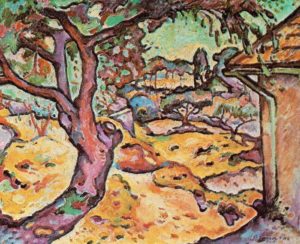
During his youth, most of George Braque’s artpieces where influenced and inspired by the works of Henri Matisse and André Derain; the founders of Fauvism. It was a movement that was mainly characterized by the use of bright, vivid, and polychromatic colors. This, along with the use of “rough”, and “instinctive” brush strokes is what coined the term “Les fauves”(Wildcat in English). I first encountered The painting “Der Ölbaum (1907)” by George Braque on what appeared to be an antique catalogue that was used by the “Salons” at the time to cultivate public interest on any ongoing expositions. Considering that color printing was so expensive at the time, the catalogue showed a black and white version of the painting.
After looking for an online picture of the painting, what appeared to be the post-impressionist work of a prominent artist, transformed into something totally different. Patters of peculiar clashing colors designed to shock the audience depicted something that totally opposed the colors of the mental picture I had for the painting. By virtue of that, and because Fauvism was largely about embracing the use of irrational color patterns, the feel and emotions of the landscape in the painting depict a much more vibrant and bright atmosphere. Furthermore, the colored version of the painting also allowed me to obtain a better visualization of the aggressive brush strokes present. A style that is often present in a lot of the former artistic movements (such as impressionism), and were often designed to shock the general public; because of this, I believe that the style of this painting reflects the cultural desire of the time to reveal against conservative art ideals.
Overall, I can say that the color and style are the main mediums through which Fauvism sets itself apart from other artistic movements. This is important because the fact that I first encountered the painting in black and white, allowed me to obtain a better appreciation for it. Sure, I was totally shocked by the color selection and aggressive style used, nevertheless, the impact this had on what once was a more conservative public is what makes these innovative movements such as Impressionism and Fauvism revolutionary. This “entrepreneurial” approach many of the modern artists took is what laid the foundations for future artistic movements at the time. In this case, this is what laid the foundations for the early XXI century movement, Cubism.
References:
Phillips, Sam. –Isms: Understanding Modern Art. New York, NY: Universe Publishing, 2012.

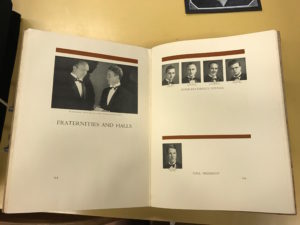

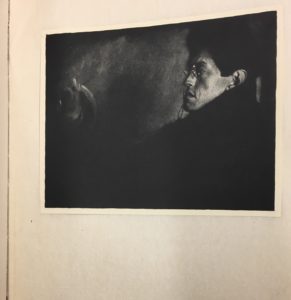

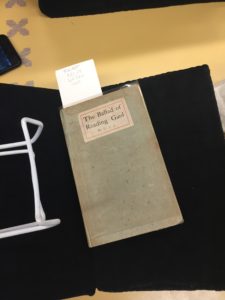
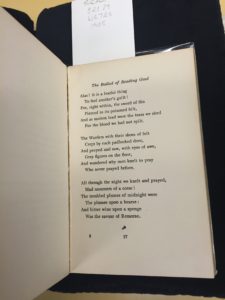
 The object I found most interesting in Special Collections was the first edition of Dubliners by James Joyce, published in 1914. This attraction is mostly due to my natural affinity for first-edition anything – when I buy records I prefer first-editions, not necessarily to play, but rather to transport me back into that time period as something my parents or the artist would own, advancing my appreciation for the music. A major component of my senior-year English class was based around Dubliners, in which several stories intrigued me due to Joyce’s writing style. Reading from a book with a cover elaborately decorated and with a few illustrations scattered here and there, it was quite interesting to see such a simple first edition, with a plain red cover and a simple “Dubliners” written at the top in gold lettering. With such a simple edition, I could see the images Joyce was attempting to provoke in his stories being solely up to the reader’s imagination, rather than supplementing it with illustration as in later editions. As with the example of the records, holding this first-edition gave off a very heavy feeling and brought me back to 1914, establishing a stronger connection to Joyce’s masterpiece.
The object I found most interesting in Special Collections was the first edition of Dubliners by James Joyce, published in 1914. This attraction is mostly due to my natural affinity for first-edition anything – when I buy records I prefer first-editions, not necessarily to play, but rather to transport me back into that time period as something my parents or the artist would own, advancing my appreciation for the music. A major component of my senior-year English class was based around Dubliners, in which several stories intrigued me due to Joyce’s writing style. Reading from a book with a cover elaborately decorated and with a few illustrations scattered here and there, it was quite interesting to see such a simple first edition, with a plain red cover and a simple “Dubliners” written at the top in gold lettering. With such a simple edition, I could see the images Joyce was attempting to provoke in his stories being solely up to the reader’s imagination, rather than supplementing it with illustration as in later editions. As with the example of the records, holding this first-edition gave off a very heavy feeling and brought me back to 1914, establishing a stronger connection to Joyce’s masterpiece.  Out of everything in Special Collections, there was nothing else that I was drawn to as much as these manuscripts by George Crumb. It is easy to tell from the manuscripts that his work was avant-garde, but you can also tell by listening to the pieces being played. The pieces that I looked at were Crumb’s Prophecies of Nostradamus and Agnus Dei.
Out of everything in Special Collections, there was nothing else that I was drawn to as much as these manuscripts by George Crumb. It is easy to tell from the manuscripts that his work was avant-garde, but you can also tell by listening to the pieces being played. The pieces that I looked at were Crumb’s Prophecies of Nostradamus and Agnus Dei. Now every Agnus Dei that I have heard is different, but this is one extremely different format wise. The format is rightfully in the shape of a peace sign, as there is a part in piece saying “Dona nobis pacem,” which means “Give us peace” in latin. You also have to actively look for where this piece starts (it starts at the left diagonal line of the peace sign). This makes it difficult for the musician playing not only because of the format, but also because it requires vocalization from them. I would not go and say that this is the most creative version I have seen (go look at Agnus Dei by Leonard Bernstein), but it certainly is something else.
Now every Agnus Dei that I have heard is different, but this is one extremely different format wise. The format is rightfully in the shape of a peace sign, as there is a part in piece saying “Dona nobis pacem,” which means “Give us peace” in latin. You also have to actively look for where this piece starts (it starts at the left diagonal line of the peace sign). This makes it difficult for the musician playing not only because of the format, but also because it requires vocalization from them. I would not go and say that this is the most creative version I have seen (go look at Agnus Dei by Leonard Bernstein), but it certainly is something else.